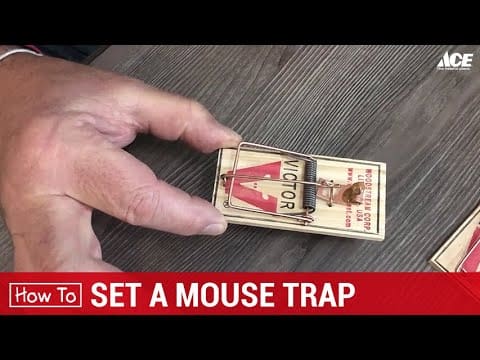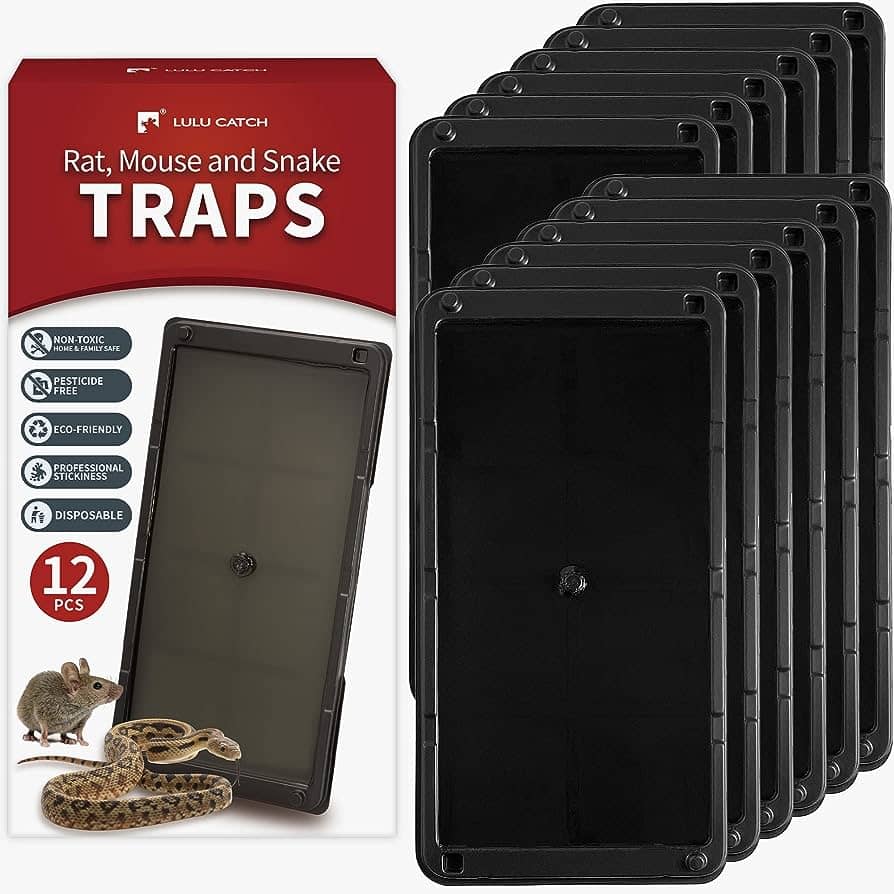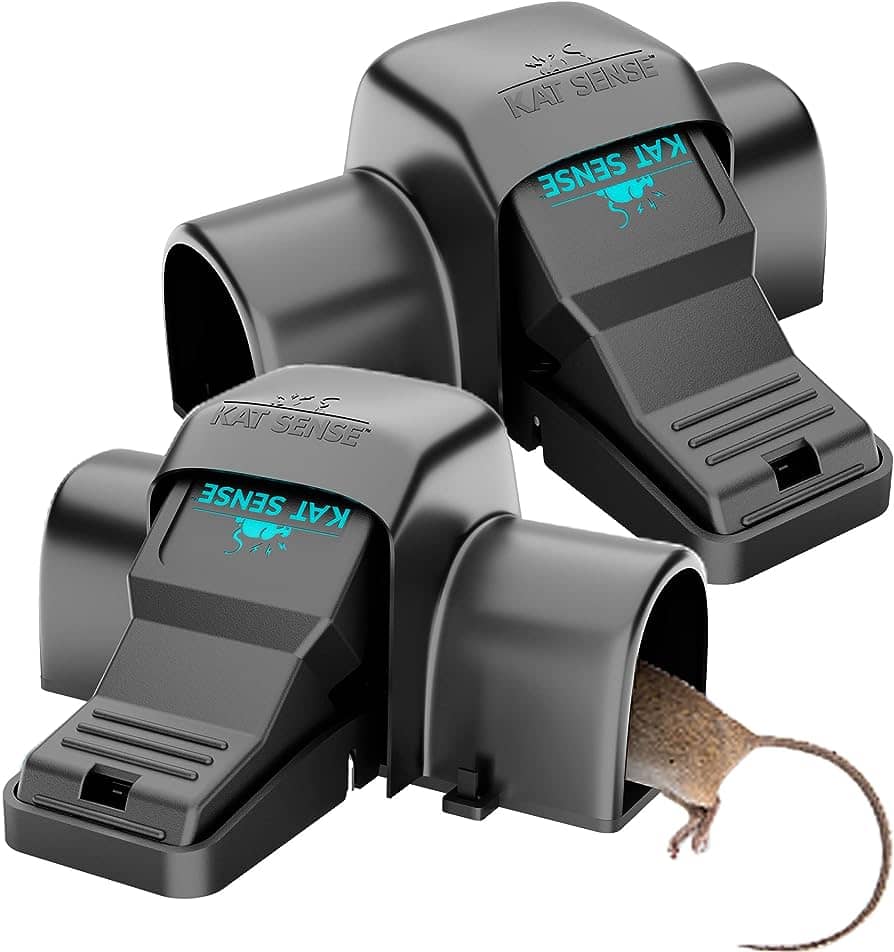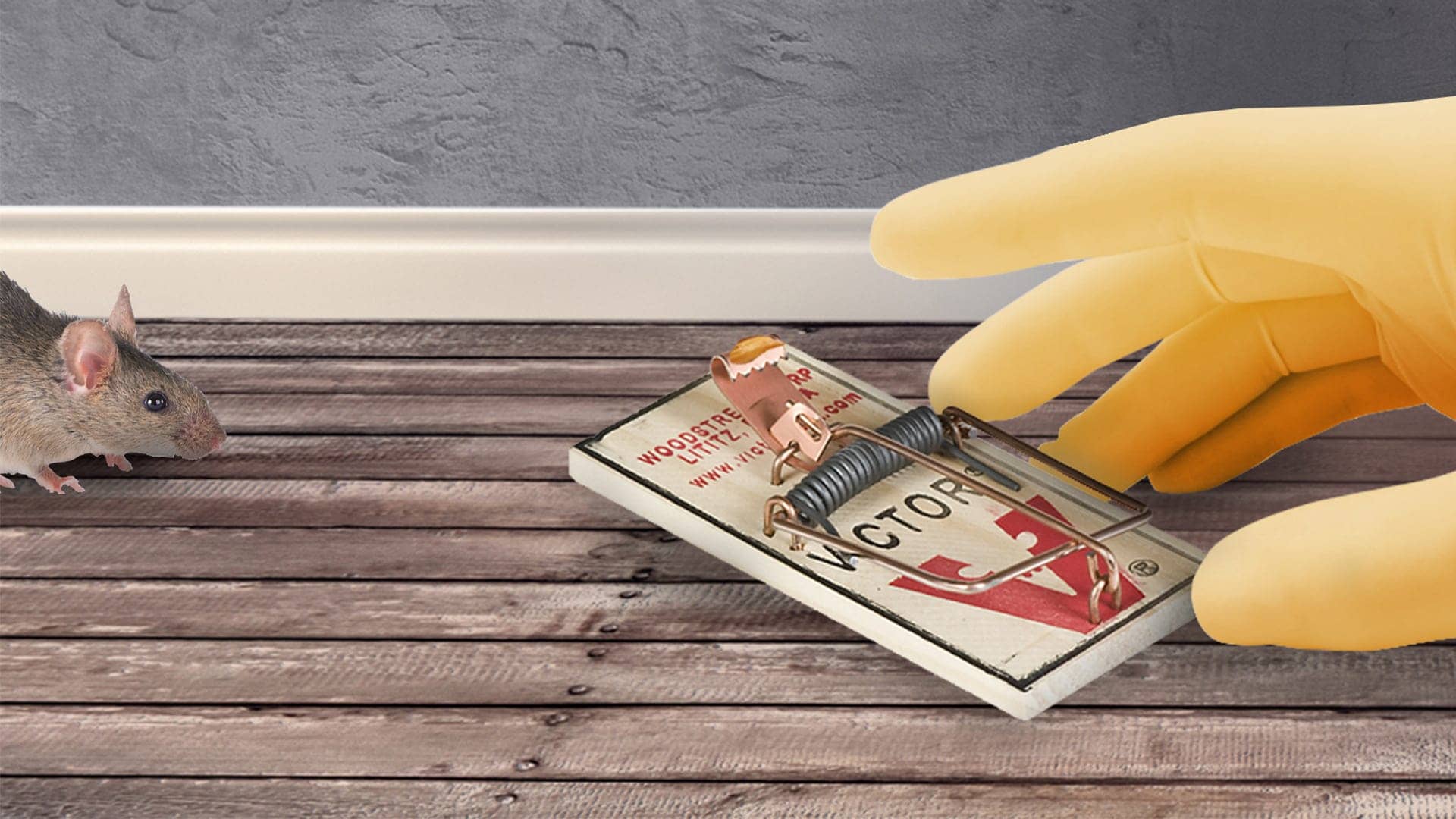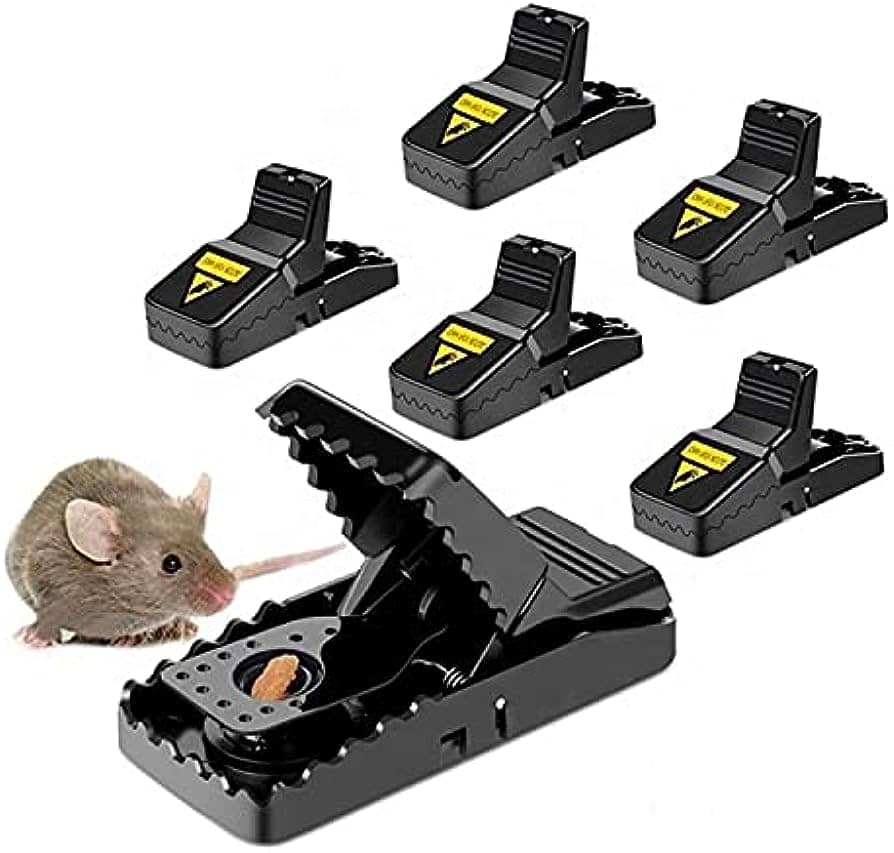To safely set up a mouse trap, place it in areas with mouse activity and avoid touching the bait or trap mechanism directly. When setting the trap, ensure it is stable and secure, and use gloves to prevent the transfer of human scent.
Additionally, position the trap against a wall or in areas where mice commonly travel. Regularly check the traps and dispose of any captured rodents promptly and safely. By following these steps, you can effectively and safely set up a mouse trap in your home.
Understand The Importance Of Safe Mouse Trap Setup
Ensure the safe setup of a mouse trap by following these essential steps. Protect your home from pests through careful and effective mouse trapping techniques.
Setting up a mouse trap may seem like a simple task, but it is crucial to prioritize safety when dealing with rodents. Improper installation can lead to a range of risks for both humans and pets. This section will explore the dangers of incorrect mouse trap placement, why safety precautions are necessary, and the benefits of opting for humane traps.
The Risks Of Improper Mouse Trap Installation:
- Injury to humans: Placing a mouse trap in a careless or haphazard manner can increase the chances of accidental injury. Whether it’s finger entrapment or unintended tripping, it’s important to consider the potential harm to humans.
- Harm to pets: Traditional snap traps can pose a significant danger to curious pets, such as cats or small dogs. Incorrectly positioned traps may lead to unintended pet injuries.
- Damage to property: Careless trap placement can result in damage to walls, furniture, or other items. Traps that are not securely set up may accidentally snap shut, causing property damage in the process.
Why Safety Precautions Are Necessary To Protect Humans And Pets:
- Prevent injuries: Taking necessary safety precautions is essential to avoid potential injuries to both humans and pets. Proper installation reduces the risk of accidental finger entrapment or pet paw injuries.
- Safeguard against property damage: By ensuring appropriate trap placement, you can lessen the chances of accidents that may cause damage to your property. This helps maintain the integrity of your surroundings.
- Minimize stress and trauma: Safe mouse trap setup helps minimize stress and trauma for both humans and pets. By taking precautions, you can create a secure environment, reducing anxiety associated with rodent control.
The Benefits Of Using Humane Traps For Rodent Control:
- Ethical approach: Humane traps provide a compassionate alternative to traditional traps that may cause harm or suffering to rodents. With humane traps, you can capture mice without causing unnecessary pain or distress.
- Reduced risk to pets: Human traps are designed to prioritize the safety of both rodents and pets. By opting for humane options, you can minimize the chances of your furry companions getting injured while exploring.
- Environmentally friendly: Humane traps are generally reusable and do not rely on toxic baits or chemicals. This eco-friendly approach reduces the environmental impact often associated with traditional rodent control methods.
Remember, prioritizing safe mouse trap setup not only minimizes risks to humans, pets, and property, but also reflects a compassionate approach towards rodent control. By understanding the importance of safety precautions and considering the benefits of humane traps, you can create a secure and respectful environment for everyone involved.
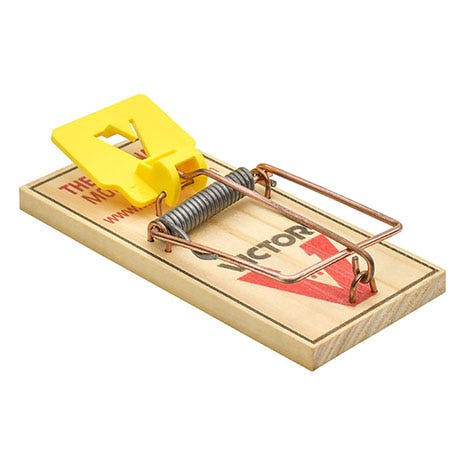
Credit: www.victorpest.com
Gathering The Necessary Supplies
To safely set up a mouse trap, start by gathering all the necessary supplies, such as a mousetrap, bait, and gloves. Ensure you handle the trap with care and follow the instructions to protect yourself from potential harm.
Choosing The Right Type Of Mouse Trap:
- Snap traps: Considered one of the most effective mouse traps, these devices have a spring-loaded mechanism that swiftly snaps shut when a mouse touches the trigger plate. Be cautious when handling snap traps, as they can cause harm if triggered accidentally.
- Glue traps: These sticky boards trap mice by capturing them in a strong adhesive surface. While they can effectively catch mice, they may not kill them instantly, which can lead to ethical concerns.
- Humane traps: If you prefer a more humane approach, consider using live-catch traps. These allow you to catch mice without harming them, enabling you to release them far away from your home.
- Electronic traps: Designed to deliver a high-voltage shock, electronic traps kill mice instantly. These traps are safe to use and minimize contact with the captured mouse.
Selecting A Safe And Suitable Location:
- Identify common areas: Determine where the mice frequently roam in your home. Look for signs of droppings, gnawed materials, or tracks to locate their activity zones.
- Kitchen and pantry: Mice are often attracted to food sources, especially in areas where they can easily access crumbs or leftovers. Place traps close to areas where you store food.
- Walls and entry points: Set up traps along walls or near entry points where mice are likely to travel. These areas can include gaps, cracks, or holes in the structure of your home.
- Outdoor sheds or garages: If you’re dealing with mice outside your home, focus on areas such as sheds or garages where they may have found shelter.
- Secure and hidden spots: Ensure the traps are placed in spots where children and pets cannot reach them. For added safety, consider using protective bait stations or lockable covers.
Essential Tools And Materials Needed For Setup:
- Mouse traps: Based on your preferred choice from the options mentioned above, purchase the suitable mouse traps in the required quantities.
- Bait: Mice are attracted to a variety of food items including peanut butter, cheese, chocolate, or dried fruits. Experiment with different baits to determine which ones work best in your situation.
- Disposable gloves: Wearing gloves while handling mouse traps can prevent the transfer of pathogens or undesirable scents that may discourage mice from approaching the traps.
- Cleaning supplies: Have cleaning supplies, such as disinfectant or paper towels, readily available to maintain cleanliness and hygiene when setting up the traps.
- Flashlight: Since mice are predominantly active during the night, a flashlight will help you effectively identify their activity areas and locate appropriate trap placement.
- Disposable bags: Prepare bags to dispose of mice, in case they are caught in the traps. Make sure to seal the bags tightly to prevent any odor or potential contamination.
Remember, understanding the type of mouse trap that suits your needs, selecting the right location, and gathering the necessary supplies are crucial steps in safely setting up mouse traps.
Step-By-Step Instructions For Safe Mouse Trap Setup
Learn the safe and effective way to set up a mouse trap with step-by-step instructions. Follow these guidelines to ensure a successful setup without endangering yourself or others.
Preparing the trap for use:
- Before setting up the mouse trap, ensure it is clean and free from any dust or debris.
- Familiarize yourself with the trap’s design and operating mechanism by reading the manufacturer’s instructions.
Checking for any defects or damage:
- Inspect the trap for any defects, such as broken springs or loose parts, which may affect its functionality.
- Ensure the trap is in good condition and there are no sharp edges that could cause injury.
Cleaning the trap to maintain hygiene:
- Clean the trap thoroughly with warm water and mild detergent to remove any odors or residue from previous use.
- Rinse the trap well and allow it to dry completely before applying bait.
Applying bait to attract mice effectively:
- Choose an appropriate bait, such as peanut butter or chocolate, to attract mice to the trap.
- Apply a small amount of bait to the designated area of the trap, making sure not to overload it.
Placing the trap in strategic locations:
- Identify high-traffic areas where mice are likely to pass through, such as near food sources, behind appliances, or along walls.
- Avoid placing traps in areas accessible to children and pets to prevent accidental contact or tampering.
Identifying high-traffic areas for mice:
- Look for signs of mouse activity, such as droppings, gnawed objects, or tracks, to determine potential locations for trap placement.
- Focus on areas where mice are most likely to travel, such as near entrances or along established paths.
Avoiding areas accessible to children and pets:
- Ensure the trap is positioned in areas where children and pets cannot reach or knock it over.
- Consider using enclosed bait stations or placing traps in secured areas to minimize the risk of accidental exposure.
Positioning traps for maximum effectiveness:
- Set multiple traps along the suspected mouse pathways, increasing the likelihood of capturing mice.
- Place traps perpendicular to walls or baseboards, as mice often travel along these edges.
Ensuring the trap is secure and safe:
- Double-check that the trap is securely set and won’t easily tip over or accidentally trigger.
- Regularly inspect the trap to ensure it remains in place and hasn’t been moved or disturbed.
Setting the trap according to manufacturer instructions:
- Follow the manufacturer’s instructions carefully when setting the trap, paying attention to specific guidelines and safety precautions.
- Ensure the trap mechanism is fully engaged and ready to snap closed when triggered.
Avoiding potential hazards during setup:
- Exercise caution while setting the trap to avoid accidental finger injuries or getting fingers caught in the trap mechanism.
- Keep your hands away from the trigger area and use a stick or other tool if necessary to set the trap.
Remember, setting up mouse traps requires caution and attention to detail. By following these step-by-step instructions and taking necessary safety measures, you can effectively and safely deal with a mouse problem in your home.
Additional Tips For Safety And Success
When setting up a mouse trap, follow these additional tips to ensure your safety and success. By carefully following these guidelines, you can effectively set up a mouse trap without any risks or difficulties.
When setting up mouse traps, there are a few additional tips you should keep in mind to ensure both your safety and success in capturing mice. Monitoring and inspecting traps regularly, proper disposal of trapped mice, and safely handling and storing traps when not in use are essential elements to consider.
Monitoring And Inspecting Traps Regularly:
- Check the traps at least once a day: Regular monitoring will allow you to promptly remove any trapped mice and reset the traps for potential new captures.
- Examine the traps for activity: Look for signs of mice tampering with the traps or any visible droppings, indicating their presence. This will help you determine if your trapping methods are effective.
- Re-position the traps if necessary: If you notice mouse activity in a particular area but are not getting any catches, try moving the traps to a different location within that area. Mice may be avoiding them due to certain factors.
Proper Disposal Of Trapped Mice:
- Wear protective gloves: To prevent any potential diseases or contamination, wear disposable gloves while handling trapped mice.
- Seal the trapped mice in a plastic bag: Place the caught mice in a secure plastic bag before disposal to avoid contact with other people, pets, or the environment.
- Choose an appropriate disposal method: Dispose of the trapped mice in a sealed outdoor trash can or follow local regulations for proper disposal, such as using designated waste collection services.
Safely Handling And Storing Traps When Not In Use:
- Wear gloves when handling traps: Whether you are setting up, releasing, or storing traps, always wear gloves to maintain hygiene and protect yourself from potential injuries.
- Clean traps thoroughly: After each use, clean the traps with hot soapy water or a disinfectant solution to remove any traces of mouse scent or residue. This will help prevent mice from avoiding the traps.
- Store traps safely: When not in use, store the traps in a secure location out of reach from children and pets. Keep them in a well-ventilated area to avoid any potential odors.
Remember, by monitoring and inspecting traps regularly, disposing of trapped mice properly, and safely handling and storing traps, you can maximize your chances of successfully capturing unwanted mice while prioritizing safety.
Frequently Asked Questions Of How To Safely Set Up A Mouse Trap
What Is The Safest Way To Set A Mouse Trap?
The safest way to set a mouse trap is to follow these steps: Place bait on trap, set trap, and position it near a wall.
How Do You Set A Mousetrap Without Getting Hurt?
To set a mousetrap without getting hurt, follow these steps: 1. Hold the trap by the base, keeping your fingers away from the snapping mechanism. 2. Place bait, like peanut butter, on the trigger plate to attract the mouse. 3. Slowly set the trap by pulling the snap wire back and hooking it onto the bait pedal.
4. Position the trap against a wall or near the mouse’s activity area.
What Is The Best Thing To Set A Mouse Trap With?
The best thing to set a mouse trap with is peanut butter. It is highly effective in attracting mice.
Where Not To Put Mouse Traps?
Mouse traps should not be placed in areas where children or pets can access them.
Conclusion
Setting up a mouse trap properly is essential to ensure its effectiveness and safety. By following the steps outlined in this blog post, you can create a mouse-free environment without putting yourself, your family, or any pets at risk. Remember to choose the right type of trap for your needs, position it strategically in areas frequented by mice, use appropriate bait to attract them, and handle traps with caution to prevent injuries.
Regularly check and reset the traps until you have successfully eradicated the mouse problem. Don’t forget to dispose of the mouse in a sanitary manner. By implementing these tips, you can maintain a clean and rodent-free home while keeping everyone safe.
